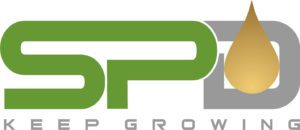
FAQs
Frequently Asked Questions
Display: none
Q: What is distillation?
A: Distillation is a process for separating specific components of a mixture by targeting specific boiling points and utilizing the phase change between vapor and liquid stages via evaporation and re-condensing to isolate target molecules.
In distillation your outputs are 1) your Target Molecule, typically called “distillate” and 2) your impurities, typically called “residue”.
Q: Is your system a Wiped film, Thin-film or Short-Path system, and what is the difference?
A: There is a lot to unpack here but you’ll be happy you did as there is a lot of misinformation out there regarding these designations…
Thin-film distillation = any distillation method where in the crude material is dispersed into a “thin film” onto the evaporator surface. The thin film is typically achieved by a roller or wiper basket assembly that disperses the crude as it is pumped into the evaporator body but other methods are available such as injection nozzle dispersal.
Wiped-Film distillation = is a specific method of thin-film distillation that achieves a thin layer by wiping the material across the evaporative surface. The wiping is achieved by wiper blades that are attached to the wiper basket assembly. However, most distillation of viscous materials can be achieved with rollers integrated onto the wiper basket.
*SPD utilizes rollers in our wiper basket assembly as rollers increase surface area and provide superb agitation of the solution.
Short-path distillation = is a distillation configuration where the evaporator and condenser are within the same body (internal condenser). Simply put…the molecules have a very short distance to travel between the evaporator surface and the condensing surface. It is this short distance that allows you to precisely refine specific molecules.
In contrast a Falling Film Evaporator has a very large evaporator in one body and then a very large (external) condenser in another body. As this method has large surface area it is great for separating dislike materials (oil and ethanol) but not good for precise refinement (CBD, CBN).
Thus SPD Systems utilizes all three. We have short-path systems that utilize a wiper basket assembly that creates a thin-film environment.
Q: Is the process automated?
A: SPD Systems manufactures systems in various sizes with 3x control options from manual to fully automated.
Manual: Ancillary equipment (gear pumps, circulators, vacuum pumps) are controlled via on/off switch control panel. Requires constant operator input for operation.
Semi-Automatic: Ancillary equipment are controlled via an on/off switch control panel with automated cold trap circulator and read out screen for gear and vacuum pumps. Requires less operator input.
Fully Automatic: Ancillary equipment are controlled via a 21” touchscreen driven by Allen Bradley PLC for continuous refinement. Requires minimal operator input.
Q: Is the process “continuous” or “batch”?
A: Your ability to run processes that are continuous vs. batch depends on if you invest in a single stage OR multi-stage syste.
Multi-stage = Continuous processing with multiple stages IN-LINE allowing you to flow from one stage (or distillation pass) continuously on to the next. In this style of processing, you gain economies of scale and reach your ROI faster as you do not have the added cost of labor intensive collection and human error.
Single Stage = Batch processing with a single stage system requires multiple passes on the same piece of equipment which thus includes increased operator inputs for collection, transfer, product maintenance, parameter changes, etc.
Q: How fast can I distill?
A: “How fast” or “throughput” is dependent on your distillation system sizing (pumps, surface area, feed tank etc) as well as the composition of the starting material.
SPD Systems has two Product Categories; Commercial Scale (4.5 – 25L/hr) and Industrial Scale (50 – 150L/hr) with models named for their expected throughput (ex: SPD-25 = 25L/hr). We’d be happy to discuss which size fits your business model best!
Q: How many people does it take to operate the machine?
A: Our fully automated systems require 1.5x operators. Requirements are to load, monitor and collect the final product.
*It is never recommended to operate a machine without monitoring regardless of manual or fully automated.
Q: What kind of Crude can I run through an SPD Systems skid?
A: SPD Systems recommends your feed stock be of a crude material that is winterized, decarboxylated and absent of all solvents.
*If your crude contains residual solvent we recommend our Rolled Film Evaporator stage which is capable of removing up to 15% of residual solvent.
Q: How do cold traps work?
A: Cold traps are essentially secondary condensers and their job is to recondense any remaining compounds that were not condensed in your main condenser body before they foul your vacuum system at the end of your vapor trail. Highly volatile compounds that a cold trap captures are typically residual solvent but also very light terpenes which can be valuable to your organization.
Smaller distillation systems with smaller thermal loads are able to utilize a circulator for a cold trap cooling mechanism.
However, both larger systems as well as distillation protocols that require deeper vacuum, will GREATLY benefit from a Liquid Nitrogen (LN2) Cold trap and thus it is SPD’s strong recommendation to utilize Liquid Nitrogen whenever possible.
*SPD Systems manufactures a Liquid Nitrogen (LN2) Autofill System for easy LN2 cold trap cooling.
Q: Do you install your own equipment?
A: Each system sale includes a 5x day Installation and Operator Training conducted by 2x SPD Systems Engineers.
Q: What is the SPD warranty?
A: Each system is supported by a 1 yr manufacturers’ warranty. Additionally, SPD will stock all components for 1yr.
